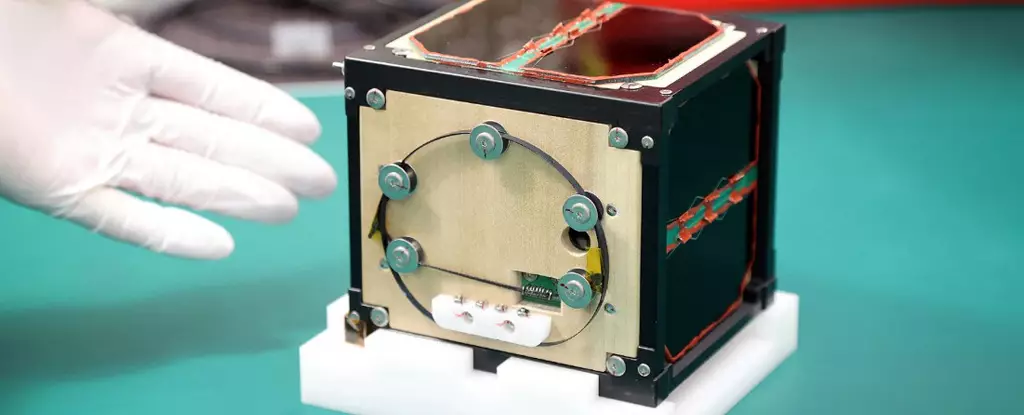In a groundbreaking development in the field of space exploration, Japanese researchers have successfully built the world’s first wooden satellite. This innovative cuboid craft, developed by scientists at Kyoto University in collaboration with the logging company Sumitomo Forestry, is set to be launched into space aboard a SpaceX rocket in September. With each side measuring just 10 centimeters, the wooden satellite represents a significant step forward in sustainable space technology.
One of the key features of the wooden satellite is its environmentally friendly design. The creators of the satellite anticipate that the wooden material used in its construction will burn up completely upon re-entry into the Earth’s atmosphere. This unique feature could potentially eliminate the generation of metal particles that pose a threat to the environment and telecommunications systems. By promoting the use of non-metallic materials in satellite construction, the developers hope to set a new standard for sustainable space technology.
During a press conference announcing the completion of the wooden satellite, Takao Doi, an astronaut and special professor at Kyoto University, emphasized the importance of non-metal satellites becoming mainstream. This shift towards more environmentally conscious satellite designs could have far-reaching implications for the future of space exploration. By reducing the environmental impact of satellite launches and re-entries, researchers and space agencies can work towards a more sustainable approach to space exploration.
The wooden satellite, named LignoSat, is scheduled to be handed over to the Japanese space agency JAXA for further testing. Upon its launch from the Kennedy Space Center in September, the satellite will travel to the International Space Station (ISS) where it will be released from the Japanese experimental module. Researchers will then collect data on the satellite’s strength and durability, including its ability to withstand extreme temperature changes. This information will provide valuable insights into the performance of wooden materials in space environments.
In addition to the wooden satellite project, recent developments in space exploration include the launch of a sophisticated satellite developed through a collaboration between the European Space Agency (ESA) and JAXA. This satellite, known as EarthCARE, is designed to study the role of clouds in climate change mitigation. By harnessing the power of international collaboration, space agencies are advancing research efforts to address global challenges such as climate change.
The world’s first wooden satellite represents a significant milestone in the evolution of space technology. With its sustainable design and environmentally conscious approach, this innovative satellite sets a new standard for future space missions. By embracing alternative materials in satellite construction and fostering international collaboration, researchers and space agencies can pave the way for a more sustainable and responsible approach to exploring the cosmos.


Leave a Reply